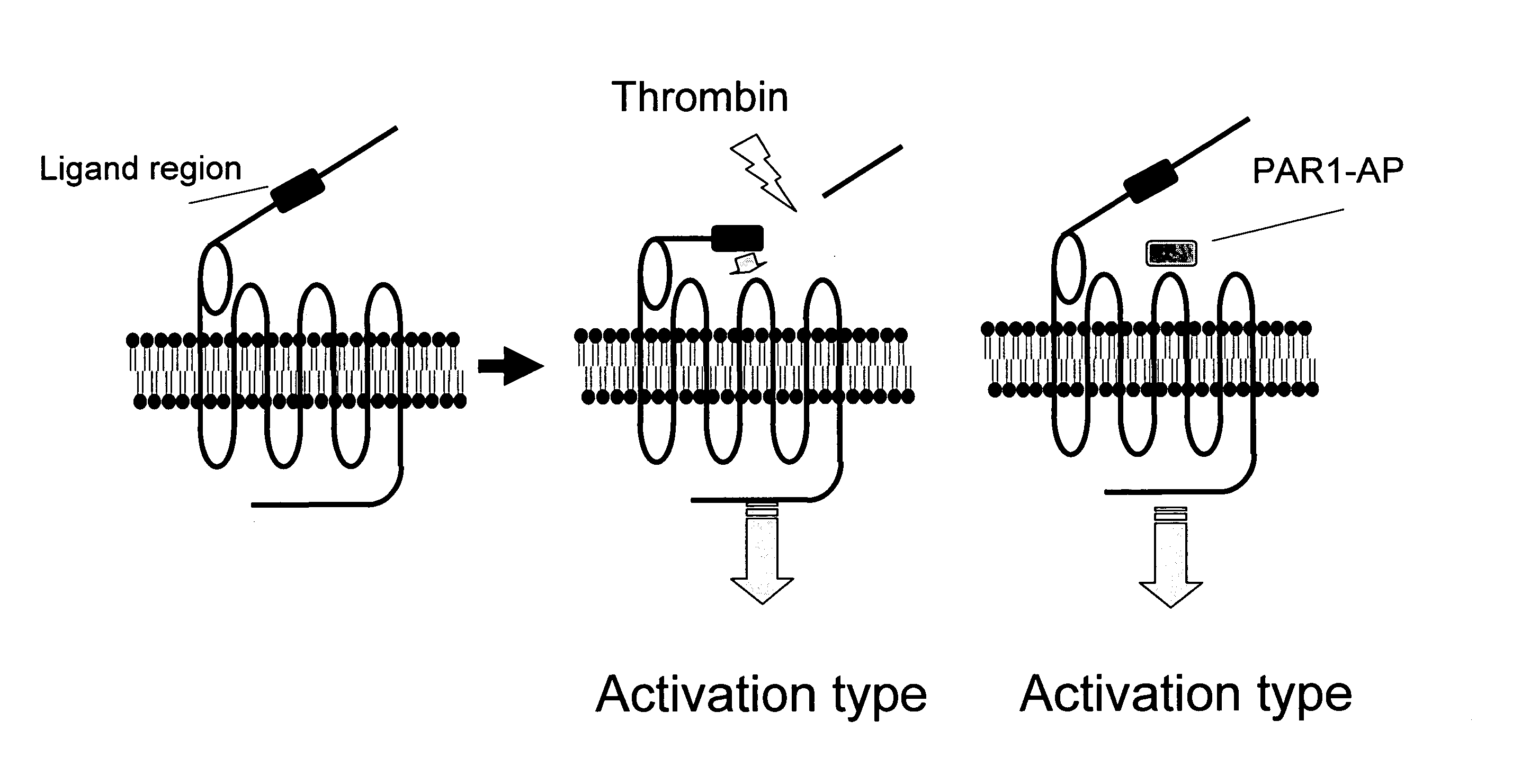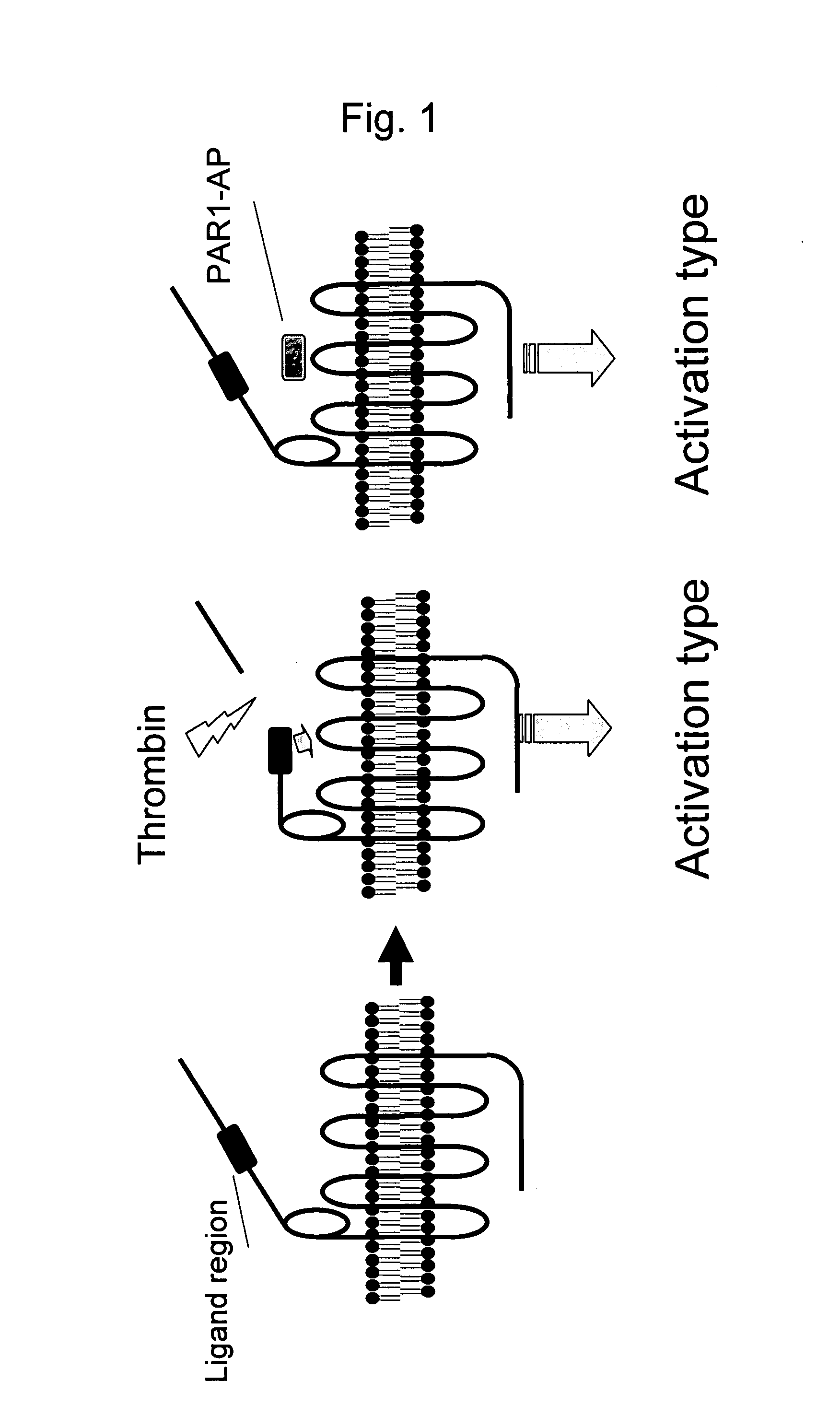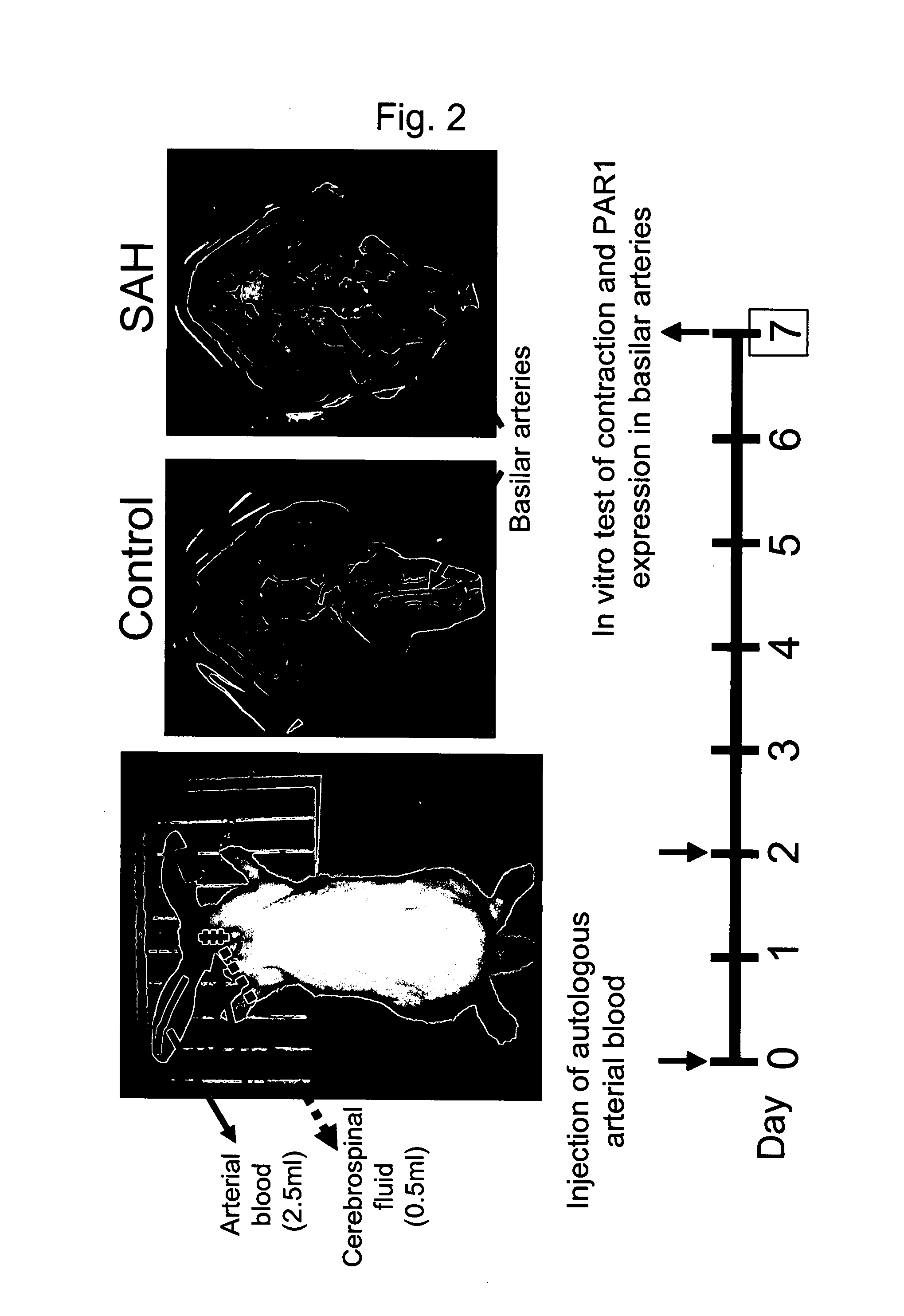Remedy for Angiospasm Accompanying Subarachnoid Hemorrhage Containing Thrombin Receptor Antagonist as the Active Ingredient
a technology of thrombin receptor and subarachnoid hemorrhage, which is applied in the direction of drug composition, extracellular fluid disorder, biocide, etc., to achieve the effect of suppressing cerebral vasospasm, highly selective, and inhibiting function
- Summary
- Abstract
- Description
- Claims
- Application Information
AI Technical Summary
Benefits of technology
Problems solved by technology
Method used
Image
Examples
example 1
Production of Rabbit Double-Hemorrhage Model
[0097]As a model animal of subarachnoid hemorrhage, rabbit double-hemorrhage models were produced. The resulting rabbit double-hemorrhage models were used to find out the role of PAR1 in controlling vascular tension upon subarachnoid hemorrhage (SAH).
[0098]First, 2.5 ml each of autologous arterial blood was injected into the cisterna magnas twice on Days 0 and 2. Hereinafter, this group is also referred to herein as the “SAH group”. Models injected with equal amounts of saline instead of autologous arterial blood constituted the control group. On Day 7, rabbits from each group were euthanized and endotheliums were removed from the dissected basilar arteries to produce ring preparations (500 μm in width) (FIG. 2). The endothelium-removed basilar artery ring preparations produced in this example were used to perform experiments on contractile response in the following examples.
example 2
Contractions of Endothelium-Removed Basilar Arteries Induced by Hyperkalemic Depolarization and Endothelin-1
[0099]Contractions of endothelium-removed basilar arteries induced by depolarization stimulation with 118 mM K+ and 100 nM endothelin-1 (ET-1) were determined. Endothelin-1 is a substance that acts on vascular smooth muscle and cause the blood vessels to contract.
[0100]The results are shown in FIG. 3. The vertical axes represent the contractile force of the ring preparations where the left graph shows contractile force upon 118 mM K+ stimulation in mg while the right graph shows contractile force upon 100 nM endothelin-1 stimulation in % where the contractile force upon 118 mM K+ stimulation is shown as 100%. As a result, contractile response to 118 mM K+ depolarization and contractile response to endothelin-1 for the SAH group were similar to those for the control group and showed small difference therefrom.
example 3
Contractile Responses to Thrombin in Rabbit Basilar Arteries
[0101]Contractile responses to thrombin were determined for the rabbit basilar arteries from the control group and the SAH group. Following contractile response induced by 118 mM K+ depolarization stimulation, the basilar artery ring preparations were stimulated with thrombin. Thrombin is an endogenous ligand of PAR1.
[0102]The results are shown FIG. 4. The upper and lower left panels show contractile forces with time where contractile forces upon 118 mM K+ depolarization stimulation is shown as 100%. The right graph shows contractile force with respect to thrombin concentration. For the control group, thrombin (1 unit / ml) did not induce contraction and thrombin (10 units / ml) only showed mild temporary contraction (21.3±1.2% of 118 mM K+-induced contraction) (FIG. 4). On the other hand, for the SAH group, thrombin began to induce significant continuous contraction from 0.3 units / ml and showed contractile force of 73.1±2.8% a...
PUM
| Property | Measurement | Unit |
|---|---|---|
| carbon number | aaaaa | aaaaa |
| weight | aaaaa | aaaaa |
| width | aaaaa | aaaaa |
Abstract
Description
Claims
Application Information
 Login to View More
Login to View More - R&D
- Intellectual Property
- Life Sciences
- Materials
- Tech Scout
- Unparalleled Data Quality
- Higher Quality Content
- 60% Fewer Hallucinations
Browse by: Latest US Patents, China's latest patents, Technical Efficacy Thesaurus, Application Domain, Technology Topic, Popular Technical Reports.
© 2025 PatSnap. All rights reserved.Legal|Privacy policy|Modern Slavery Act Transparency Statement|Sitemap|About US| Contact US: help@patsnap.com



